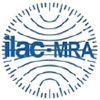Menu
Neurology

The diagnostic tests under Neurology Department at North City Diagnostic Centre checks for disorders of the central nervous system. The central nervous system is made of your brain, spinal cord, and nerves from these areas.
An EEG, or electroencephalogram, is a test that records the electrical signals of the brain by using small metal discs (called electrodes) that are attached to your scalp. Your brain cells communicate with each other using electrical impulses. They’re always working, even if you’re asleep. That brain activity will show up on an EEG recording as wavy lines. It’s a snapshot in time of the electrical activity in your brain.
EEG Uses
EEGs are used to diagnose conditions like:
- Brain tumors
- Brain damage from a head injury
- Brain dysfunction from various causes (encephalopathy)
- Inflammation of the brain (encephalitis)
- Seizure disorders including epilepsy
- Sleep disorders
- Stroke
An EEG may also be used to determine if someone in a coma has died or to find the right level of anesthesia for someone in a coma.
EEG Risks
EEGs are safe. If you have a medical condition, talk with the doctor about it before your test.
If you have a seizure disorder, there’s a slight risk that the flashing lights and deep breathing of the EEG could bring on a seizure. This is rare. A medical team will be on hand to treat you immediately if this happens.
In other cases, a doctor may trigger a seizure during the test to get a reading. Medical staff will be on hand so the situation is closely monitored.
Preparing for an EEG
There are some things you should do to prepare for EEG:
- Don’t eat or drink anything with caffeine for 8 hours before the test.
- Your doctor may give you instructions on how much to sleep if you’re expected to sleep during the EEG.
- Eat normally the night before and day of the procedure. Low blood sugar could mean abnormal results.
- Let your doctor know about any medications — both prescription and over-the-counter — and supplements you’re taking.
- Wash your hair the night before the test. Don’t use any leave-in conditioning or styling products afterward. If you are wearing extensions that use glue, they should be removed.
EEG Procedure
- You lie down on the exam table or bed, and a technician puts about 20 small sensors on your scalp. These sensors, called electrodes, pick up electrical activity from cells inside your braincalled neurons and send them to a machine, where they show up as a series of lines recorded on paper or displayed on a computer screen.
- Once the recording begins, you’ll be asked to remain still.
- You’ll relax with your eyesopen first, then with them closed. The technician may ask you to breathe deeply and rapidly or to stare at a flashing light, because both of these can change your brainwave patterns. The machine is only recording the activity of the brain and doesn’t stimulate it.
- It’s rare to have a seizureduring the test.
- You can have an EEG at night while you’re asleep. If other body functions, such as your breathing and pulse, are also being recorded, the test is called polysomnography.
- In some cases, you may be sent home with an EEG device, which will either send the data directly back to your doctor’s office or record it for later analysis.
After an EEG
Once the EEG is over, the following things will happen:
- The technician will take the electrodes off and wash off the glue that held them in place. You can use a little fingernail polish remover at home to get rid of any leftover stickiness.
- Unless you’re actively having seizures or your doctor says you shouldn’t, you can drive home. But if the EEG was done overnight, it’s better to have someone else drive you.
- You can usually start taking medications you’d stopped specifically for the test.
- A neurologist, a doctor who specializes in the brain, will look at the recording of your brain wave pattern.
EEG Results
Once the EEG results have been analyzed, they will be sent to your doctor, who will go over them with you. The EEG will look like a series of wavy lines. The lines will look different depending on whether you were awake or asleep during the test, but there is a normal pattern of brain activity for each state. If the normal pattern of brain waves has been interrupted, that could be a sign of epilepsy or another brain disorder. Having an abnormal EEG alone doesn’t mean you have epilepsy. The test just records what is happening in your brain at that moment. Your doctor will do other tests to confirm a diagnosis.
Electromyography (EMG) is a diagnostic procedure to assess the health of muscles and the nerve cells that control them (motor neurons). EMG results can reveal nerve dysfunction, muscle dysfunction or problems with nerve-to-muscle signal transmission.
Motor neurons transmit electrical signals that cause muscles to contract. An EMG uses tiny devices called electrodes to translate these signals into graphs, sounds or numerical values that are then interpreted by a specialist.
During a needle EMG, a needle electrode inserted directly into a muscle records the electrical activity in that muscle.
NCV
A nerve conduction velocity test or nerve conduction study, another part of an EMG, uses electrode stickers applied to the skin (surface electrodes) to measure the speed and strength of signals traveling between two or more points.
Why it’s done
Your doctor may order an EMG if you have signs or symptoms that may indicate a nerve or muscle disorder. Such symptoms may include:
- Tingling
- Numbness
- Muscle weakness
- Muscle pain or cramping
- Certain types of limb pain
EMG results are often necessary to help diagnose or rule out a number of conditions such as:
- Muscle disorders, such as muscular dystrophy or polymyositis
- Diseases affecting the connection between the nerve and the muscle, such as myasthenia gravis
- Disorders of nerves outside the spinal cord (peripheral nerves), such as carpal tunnel syndrome or peripheral neuropathies
- Disorders that affect the motor neurons in the brain or spinal cord, such as amyotrophic lateral sclerosis or polio
- Disorders that affect the nerve root, such as a herniated disk in the spine
Risks
EMG is a low-risk procedure, and complications are rare. There’s a small risk of bleeding, infection and nerve injury where a needle electrode is inserted.
When muscles along the chest wall are examined with a needle electrode, there’s a very small risk that it could cause air to leak into the area between the lungs and chest wall, causing a lung to collapse (pneumothorax).
How you prepare
Food and medications
When you schedule your EMG, ask if you need to stop taking any prescription or over-the-counter medications before the exam. If you are taking a medication called Mestinon (pyridostigmine), you should specifically ask if this medication should be discontinued for the examination.
Bathing
Take a shower or bath shortly before your exam in order to remove oils from your skin. Don’t apply lotions or creams before the exam.
Other precautions
The nervous system specialist (neurologist) conducting the EMG will need to know if you have certain medical conditions. Tell the neurologist and other EMG lab personnel if you:
- Have a pacemaker or any other electrical medical device
- Take blood-thinning medications
- Have hemophilia, a blood-clotting disorder that causes prolonged bleeding
What you can expect
Before the procedure
You’ll likely be asked to change into a hospital gown for the procedure and lie down on an examination table. To prepare for the study, the neurologist or a technician places surface electrodes at various locations on your skin depending on where you’re experiencing symptoms. Or the neurologist may insert needle electrodes at different sites depending on your symptoms.
During the procedure
When the study is underway, the surface electrodes will at times transmit a tiny electrical current that you may feel as a twinge or spasm. The needle electrode may cause discomfort or pain that usually ends shortly after the needle is removed.
During the needle EMG, the neurologist will assess whether there is any spontaneous electrical activity when the muscle is at rest — activity that isn’t present in healthy muscle tissue — and the degree of activity when you slightly contract the muscle.
He or she will give you instructions on resting and contracting a muscle at appropriate times. Depending on what muscles and nerves the neurologist is examining, he or she may ask you to change positions during the exam.
If you’re concerned about discomfort or pain at any time during the exam, you may want to talk to the neurologist about taking a short break.
After the procedure
You may experience some temporary, minor bruising where the needle electrode was inserted into your muscle. This bruising should fade within several days. If it persists, contact your primary care doctor.
Results
The neurologist will interpret the results of your exam and prepare a report. Your primary care doctor, or the doctor who ordered the EMG, will discuss the report with you at a follow-up appointment.
VEP is a diagnostic test used to check the optic nerve pathway which runs from your eyes to your brain. A doctor may recommend that you go for a VEP test when you have had changes in your vision that can be due to problems along the optic nerve pathway.




